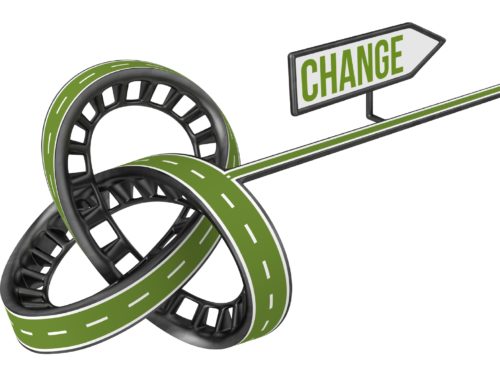Taxi companies in over 50 U.S. cities utilize a ride-hailing and payment app called Curb. Using it on a recent trip left me with one lingering question: What took them so long?
It’s not as if the technology wasn’t available. On the contrary, a company called Taxi Magic, which was relaunched as Curb, introduced a ride hailing platform for the taxi industry in 2008, one year before Uber was founded. Likewise, Zimride, which later transformed into Lyft, had been operating as a ride sharing service on university campuses since 2007.
There are a number of reasons why the taxi industry and Taxi Magic found themselves fighting to retake lost ground. There were, for instance, limitations in the early technology. The biggest reason, however, was reluctance to challenge and change the way taxi companies operate. Perhaps the most harmful was Taxi Magic’s decision to continue operating through traditional dispatchers rather than allowing customers greater transparency and access to a solution that fit their needs.
The Reluctance to Change Playing Out Today
The decimation of the taxi industry should be a lesson to others about the importance of embracing customer-focused change. Unfortunately, the lure of the status quo—especially when things appear to be working—is difficult to overcome.
The television advertising industry is experiencing this challenge today. Research conducted and recently published by Videa points to an industry that recognizes that change is needed while struggling to let go of a past that has served it well.
The survey of 174 media agency and television station advertising representatives points to a simple, but crucial truth: Knowing that you need to change is not the same as being ready to do so.
Eighty-eight percent of the survey’s respondents said that automation of the buying and selling of advertising is inevitable. Eighty-three percent believe adopting a different way of doing business would save time. The vast majority—94 percent of media agencies and 80 percent of TV reps—believe that the pricing transparency provided by automating the process is valuable.
On the surface, this knowledge should mean that the entire industry would be running to adopt new technology that would make life better for end customers that write the checks, media agencies placing ads, TV ad reps, and the stations themselves.
Unfortunately, that isn’t happening at the rate you would expect. Eighty-five percent of TV reps and 64 percent of agencies report that ad buying continues to be mostly or completely manual. Sixty-eight percent of media agencies are doubtful that they are getting the best price.
Will the traditional television advertising industry seize this opportunity? Will television stations decide to use technology as a tool to make ad buys more effective, or will they allow themselves to be reduced to a commodity purchased on price? Will the media agencies and TV ad reps that are at the highest danger of being replaced by an automated algorithm learn to use technology as a tool to add value to end customers?
It depends on how and when they view change as it comes at them.
Rethinking Fear and Risk
Responses to the Videa survey suggest that fear and uncertainty are making change difficult. Comments from all participating survey groups pointed to fear about the loss of jobs that they assume automation will create. Additionally, only 21 percent of respondents believe that organizations are very effective at using new technology to adapt to industry changes.
Similarly, TV reps and television stations reported that the ability of seasoned veterans to succeed with “masterful workarounds” as the number one reason why they are reluctant to embrace new technology.
The human brain appears to be hard-wired to value certainty and view uncertainty as a potential threat. That is why we can be reluctant to change even when we say that we want it. What’s more uncertain than wondering if adopting a new technology will cost you your job, make you less effective, or make your work harder?
Ironically, the best defense against the uncertainty of inevitable change is active engagement. Would you rather have the opportunity to be involved in where the industry is headed, or would you rather wake up to irrelevancy because you didn’t adapt?
Acknowledging the need to put aside fear and risk doesn’t mean that you will embrace change. The portion of the brain that views uncertainty as a threat is also involved in directing your response. The choices are to fight, flee, or freeze. Choosing flight or freeze as a response to impending change puts you in the position of playing catch up, or worse, becoming unnecessary in the marketplace.
Lessons for Leaders
Every industry is now, or will be, faced with the need to adapt or be rendered irrelevant. The television industry is no different. That makes leading your company to quickly change and adapt the most crucial aspect of every leader’s job. Here are four lessons you can glean from the Videa change management survey.
1. Create emotional readiness to counter act fear. People, organizations, and industries change for one of two basic reasons: crisis pushes them to change or opportunity pulls them to do so. You occasionally see some combination of both, but there is usually one primary diver.
Most companies and industries wait on crisis. Taxi companies saw little reason to adopt a ride-sharing technology like Curb until crisis forced them to do so. If you find yourself in a crisis, don’t sugar coat or waste it. Just realize that you are likely to be playing from behind in the marketplace.
Netflix, on the other hand, seized the opportunity as it made the jump from distributing DVDs to delivering its services through a streaming platform. It wasn’t an easy change, but Reed Hastings created a compelling vision of the future that focused on adding value to the customer rather than playing catch up to survive.
In reality, a relentless focus on making yourself indispensable to the customer is the only way to maintain momentum and ensure long-term success.
2. Provide involvement and support. People support what they help create. The issue isn’t IF you will adopt automation it is HOW. World-class technology platforms, like Videa, are adaptable to the way you work. That’s why it is crucial to involve your team in determining the best way to implement a technology solution. While many people are hesitant to change, everyone wants to get better. Involving people in the planning and implementation of any new technology allows them to experience the benefits first hand.
You should also plan on providing extensive training and support. If attending a single class on a subject was enough to ensure mastery, you would still be able to calculate the Pythagorean Theorem from high school geometry. Look for technology partners that provide ongoing and just-in-time support.
3. Tell positive stories early and often. Helena Stylianou, National Sales Coordinator at Graham Media in Detroit, was very specific about how Videa’s automated processes saved her time, made her more effective on a complex ad buy, and opened the door to better customer service. Your team wants to do a great job for the customers they serve. Sharing positive stories about real results help those who might be struggling or reluctant to keep at it until they master the change. More important, it provides a respected counter balance to naysayers that might try to sabotage your change efforts.
4. Go first. Ross Perot, founder of EDS and Perot Systems, once told me that leaders eat last but they go first. His meaning was more than a pity play on words. Your team is watching your example. It is difficult for them to get excited about change if you avoid it like the plague. You don’t have to become the technology expert, but it will help if your team sees you in the training program.
Change is hard. It is also inevitable. Resistance, risk, and fear are always part of the equation. Then again, the absence of those is an indicator that there really isn’t that much change. The leader’s choice is how you respond. Will you be a taxi industry and company fighting off your version of Uber or will you be the innovative leader in your industry? The answer depends on if you are late to change.
Randy Pennington is an award-winning author, speaker, and leading authority on helping organizations achieve positive results in a world of accelerating change. To bring Randy to your organization or event, visit www.penningtongroup.com , email info@penningtongroup.com, or call 972.980.9857.
Randy Pennington received financial consideration for the use of the Videa Change Management Survey results.





